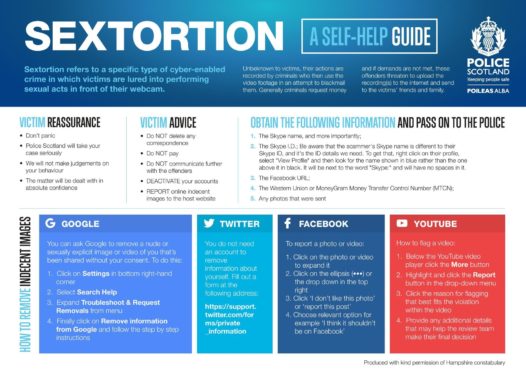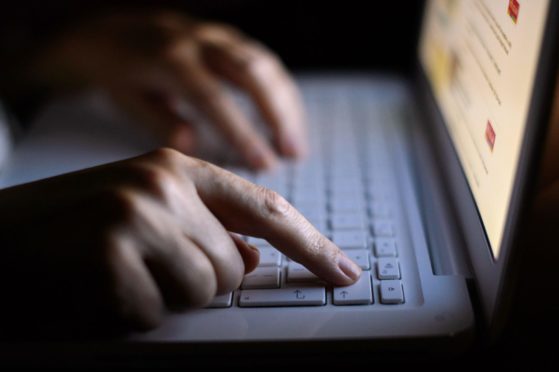Police are warning online users including businesses, gamers and streamers to the ongoing dangers of sextortion and how to combat it.
Officers have become aware of a number of cases in the north-east, with people being duped into using their webcam and then exploited.
With webcams becoming more frequent due to home working and people spending more time at home, police are keen to highlight the dangers and stress that not everyone online is who they say they are.
What is sextortion?
Sextortion is a type of cyber-enabled extortion which involves the threat of sharing sexual information, images or clips to extort money from you, whether images actually exist or not.
The extortion often takes place when the offender persuades another to remove items of clothing in front of a webcam. This can later lead to persuasion to conduct sexual acts.
Unbeknown to the victim, the acts are recorded and later used as bargaining tool or threat for money.
Who does it effect?
Children and teens are at risk to sextortion just as much as adults with one in four victims usually aged 13 or younger.
A study, made by Thorn in 2017, showed that two in three victims were girls threatened before the age of 16 and an alarming 45% of perpetrators actually carried out threats.
It was discovered that perpetrators used many forms of technology to reach victims and on more than one platform.
How to avoid it?
Police Scotland have identified a number of steps to reduce the likelihood of it happening.
They include being sensible, knowing when not to use the camera and never allowing yourself to be duped into activity that you will later regret.
Taking care online is also encouraged and to use chat rooms and apps wisely – be careful about any relationship that you form.

What to do if you’re a victim of sextortion?
The first step is to not panic and make contact with police and the internet service provider immediately. The police will take your case seriously, will deal with it in confidence and will not judge you for being in this situation.
Officers encourage deactivating social media accounts and promptly report the matter to the associated platform to have any video blocked and to set up an alert in case the video resurfaces.
Sextortion in the north-east
According to police there have been a number of reports of sextortion in the north-east in the past six months.
Due to the pandemic, many more people are using the internet from home and communicating online with friends and family through social media.
It is understood, this has given offenders an opportunity to target more users of social media.
Detective sergeant Rory Campbell from Police Scotland said: “Victims of sextortion should be reassured that police will treat each report seriously and confidentially, and that they will be supported.
“If you find yourself being blackmailed or extorted in this way, contact us on 101 or 999 in an emergency. You will be given support and your report will be taken in the utmost confidence.”
Offering advice to parents and those with young children and teens, he said: “We would ask parents of children who are gaming and streaming online to check the security settings on these platforms to try and prevent any offenders contacting them.
“If there is anyone asking you to do something that you believe to be wrong online, please let your parents, guardians or teachers know, or contact police on 101. We will support you and your report will be taken in the utmost confidence.”
The Police Scotland website has a dedicated section to sextortion which provides advice on both how to prevent being a victim and also details on how to report being a victim.
If you find yourself being blackmailed or extorted in this way, contact us on 101 or 999 in an emergency. You will be given support and your report will be taken in the utmost confidence.
